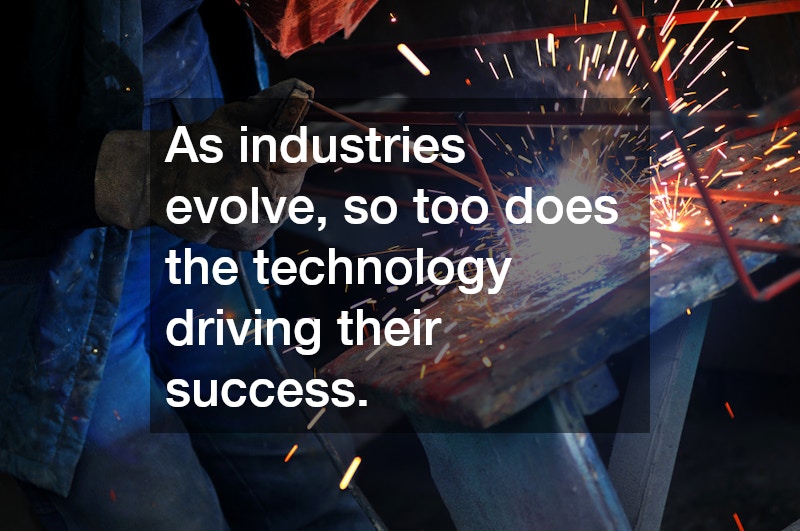The world of construction and manufacturing continues to evolve at a rapid pace, and at the heart of this evolution lies the transformative field of steel fabrication . Once a process dominated by manual craftsmanship and traditional tools, steel fabrication has embraced cutting-edge technologies that improve precision, efficiency, and sustainability. These innovations are reshaping how industries design, produce, and assemble steel structures—from skyscrapers and bridges to custom machinery and architectural marvels.
As the demand for durable, high-performance materials continues to grow, so does the need for smarter, faster, and more sustainable fabrication techniques.
The Rise of Automation and Robotics
Automation is revolutionizing the steel industry by reducing manual labor and increasing output efficiency. Robotic arms now handle complex cutting, welding, and assembly tasks with unmatched accuracy. Unlike human workers, robots can operate continuously without fatigue, ensuring consistent production quality around the clock. This not only accelerates project timelines but also minimizes human error, resulting in safer and more reliable outcomes.
In large-scale manufacturing environments, automation also enhances workplace safety. Robots can perform hazardous tasks such as high-temperature welding and heavy lifting, allowing workers to focus on supervisory roles and technical oversight. The integration of robotics in steel fabrication is leading to higher productivity, cost savings, and improved precision—key benefits that drive competitiveness in the global market.
The Impact of 3D Modeling and BIM Technology
Another game-changer in the world of steel fabrication is the adoption of 3D modeling and Building Information Modeling (BIM). These digital tools allow engineers, architects, and fabricators to collaborate in real time, creating highly detailed models that identify potential design conflicts before construction begins. BIM technology facilitates smoother communication across project teams, reduces material waste, and ensures that components fit together seamlessly during installation.
In addition, 3D modeling software helps fabricators visualize every aspect of a project, from beam placements to joint connections. This virtual approach eliminates guesswork, allowing for precise measurements and efficient resource planning. As a result, the integration of BIM into the steel fabrication process not only streamlines production but also enhances structural integrity and quality control.
Advancements in CNC Machining
Computer Numerical Control (CNC) machines have long been used in manufacturing, but recent advancements have made them more adaptable and intelligent than ever before. In steel fabrication, CNC machining ensures that every cut, bend, and weld follows exact specifications. This technology drastically reduces waste by optimizing material use and allowing for highly intricate designs that would be difficult to achieve manually.
Modern CNC systems can now connect with cloud-based platforms, allowing remote monitoring and control. Fabricators can adjust parameters in real time, track performance metrics, and predict maintenance needs—creating a more connected and efficient production environment. The precision and consistency offered by CNC technology are setting new benchmarks for quality in the steel industry.
The Shift Toward Sustainable Fabrication
Sustainability is a growing priority in every sector, and steel fabrication is no exception. With environmental regulations tightening worldwide, fabricators are adopting eco-friendly practices to reduce their carbon footprint. Recycled steel is becoming a preferred material choice, minimizing waste and conserving natural resources.
Energy-efficient machinery, green manufacturing processes, and waste recovery systems are also transforming production lines. For instance, closed-loop cooling systems and water recycling technologies are being used to conserve resources during cutting and welding operations. The adoption of renewable energy sources to power fabrication facilities further underscores the industry’s commitment to a greener future.
Moreover, sustainable design strategies are extending the lifespan of steel structures. Coatings that resist corrosion, innovative alloy compositions, and modular construction methods all contribute to buildings and infrastructure that require less maintenance and generate fewer emissions over time.
Artificial Intelligence and Predictive Analytics
Artificial Intelligence (AI) is another frontier driving innovation in steel fabrication. Through machine learning algorithms, AI can analyze production data to identify inefficiencies and recommend adjustments. Predictive maintenance systems can detect early signs of equipment failure, reducing downtime and preventing costly disruptions.
AI also enhances design optimization. Engineers can use simulation tools powered by AI to test the structural integrity of a design under different stress conditions before fabrication even begins. This approach ensures that materials are used efficiently and that projects meet safety and performance standards from the start. As digital transformation continues to advance, AI will play an increasingly critical role in making fabrication smarter, faster, and more adaptive.
As industries evolve, so too does the technology driving their success. The innovations reshaping the future of steel fabrication are not just improving efficiency and quality—they’re also making the process safer, more sustainable, and more intelligent. From automation and AI to sustainability and IoT integration, each advancement contributes to a stronger foundation for the global construction and manufacturing sectors.
By embracing these technologies, fabricators are building more than just steel structures—they’re constructing the framework for the future. As we continue to innovate, steel will remain an essential material of strength, versatility, and progress in the modern world.
